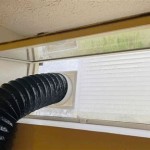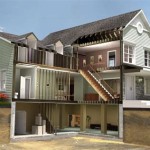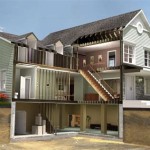What Does A Basement Sump Pump Look Like?
A sump pump is a critical component in many homes with basements, particularly those situated in areas prone to flooding or with high water tables. Its primary function is to prevent water from accumulating under the foundation and causing damage. Understanding the appearance and components of a sump pump allows homeowners to identify potential issues and ensure proper operation. This article will comprehensively describe the visual characteristics of a typical basement sump pump, covering its various parts and installation setup.
The overall appearance of a sump pump setup is relatively straightforward. The main components consist of a sump pit, which houses the pump itself, the pump, a discharge pipe, and often a check valve. Additional elements such as backup power systems, alarms, and specialized switches can also be present depending on the complexity and specific needs of the installation. The physical appearance of these components can vary slightly depending on the brand, model, and specific application, but the core elements remain consistent.
The Sump Pit: Housing the Pump
The sump pit is a basin, typically cylindrical, embedded within the basement floor. Its purpose is to collect water that accumulates around the foundation. The pit is usually constructed of plastic, concrete, or fiberglass. Plastic pits are lightweight and easy to install, while concrete pits offer greater durability. Fiberglass pits are a blend of these qualities, providing good strength with moderate weight. The size of the pit can vary, but a common diameter is between 18 and 24 inches, with a depth that can range from 24 to 36 inches. The depth is crucial for providing adequate water storage and preventing the pump from cycling on and off too frequently.
The lid of the sump pit is a notable visual feature. Typically made of plastic or metal, the lid serves to prevent debris from falling into the pit and reduces the risk of accidents. Many lids are designed to be airtight or nearly airtight to minimize the evaporation of water and the entry of radon gas or unpleasant odors into the basement. Some lids also incorporate a viewing window, allowing for a quick visual inspection of the water level inside the pit without having to remove the entire cover. The lid will also typically have openings for the discharge pipe and the power cord to pass through.
The interior of the sump pit is usually visible when the lid is removed. The bottom of the pit may contain a layer of gravel or small stones to prevent sediment from being drawn into the pump. The water level within the pit will fluctuate depending on the amount of groundwater infiltration or surface water runoff. If the pit is properly functioning, the water level should rise to a predetermined point, triggering the sump pump to activate. Observing the water level and the operation of the pump provides valuable insight into the system's performance.
The Sump Pump: The Core Component
The sump pump itself is the heart of the system. There are primarily two types of sump pumps: submersible and pedestal pumps. Submersible pumps, as the name suggests, are designed to be fully submerged in the water within the sump pit. They are typically housed in a waterproof casing made of cast iron, stainless steel, or durable plastic. This casing protects the motor and electrical components from water damage. The exterior of a submersible pump will often feature a screen or grate at the base to prevent large debris from entering and clogging the impeller.
Submersible pumps tend to be more compact and quieter than pedestal pumps. Their placement entirely within the water helps to dampen noise and vibrations. Visually, a submersible pump appears as a self-contained unit with a power cord exiting the top and a discharge outlet typically positioned near the top or side. The appearance of the pump can vary depending on the brand and model, with some featuring more streamlined designs and others having a more utilitarian look.
Pedestal pumps, on the other hand, are not designed to be submerged. The motor is mounted on a pedestal above the water level, while a long intake pipe extends down into the sump pit. The motor housing is usually made of metal and is exposed, making it more readily visible than with a submersible pump. Pedestal pumps tend to be taller and more noticeable in the basement due to their elevated motor. They are generally louder than submersible pumps but are often easier to service and repair since the motor is readily accessible.
Regardless of the type, sump pumps typically have a float switch attached to them. This switch is responsible for activating the pump when the water level reaches a certain point. Float switches can be either tethered or vertical. Tethered float switches are connected to the pump by a short length of cable, allowing them to float freely in the pit. Vertical float switches are mounted directly to the pump and move up and down along a vertical rod. The visual difference is that tethered floats dangle while vertical floats slide.
The Discharge Pipe and Check Valve: Directing Water Away
The discharge pipe is responsible for carrying the water away from the sump pit and out of the house. It is typically made of PVC or ABS plastic and has a diameter of 1 ½ to 2 inches. The pipe runs vertically from the pump to an outlet point outside the foundation. Visually, the discharge pipe is a prominent feature of the sump pump system. It is usually secured to the wall or ceiling with clamps or hangers to prevent it from sagging or moving excessively.
The location of the discharge pipe outlet is crucial. It should be positioned away from the foundation to prevent water from seeping back into the basement. Ideally, the pipe will discharge water into a storm drain, drainage ditch, or a designated area where it can safely dissipate. In colder climates, the discharge pipe should be buried below the frost line to prevent freezing, which can damage the pump or cause the pipe to burst. Outdoor portions of the discharge pipe might even include a heat cable to prevent freezing.
A check valve is often installed in the discharge pipe, typically near the sump pump itself. This valve prevents water from flowing back into the sump pit after the pump shuts off. The check valve is a small, in-line device that visually appears as a slightly enlarged section of the discharge pipe. It contains a flapper or ball that allows water to flow in one direction only. Without a check valve, the pump would have to work harder to expel the same amount of water, reducing its lifespan and increasing energy consumption. The absence of a check valve is often noticeable with the sound of water rushing back into the sump pit after the pump cycles off.
Beyond the primary components, additional elements may be present depending on the specific installation. For example, some homes may have a backup sump pump system, which consists of a second pump that automatically activates in the event of the primary pump failure. Backup pumps can be powered by battery or water pressure. Battery-powered backup pumps have a large battery unit nearby. High water alarms are also sometimes installed to provide an audible warning if the water level in the sump pit rises above a predetermined point. These alarms usually have a small sensor that floats on the water surface and triggers an alarm when it reaches a certain height. Regularly observing the appearance and functionality of these components helps to ensure the continued effectiveness of the sump pump system.

What Is A Sump Pump Peel Pumps Explain It Or Sell And Install Them

Basement Sump Pump Sedona Waterproofing Solutions

What Is A Sump Pump How Do Pumps Work Expert Advice

Diy Sump Pump Install Your Own Smd Fluid Controls

The Sump Pump Your Most Critical Basement Appliance

Basement Sump Pump Guides And Reviews

Diy Sump Pump Install Your Own Smd Fluid Controls

Permanent Fixes For Damp Basements Diy

Best Sump Pumps For Your Basement Or Crawlspace The Home

What To Do When Sump Pump Failure Leads Basement Flooding







